Inside Steelcase + IBM’s Flexible Hybrid Workplaces
As we turn the calendar to 2023, we’re learning more about how hybrid work is being adopted by organizations around the world. New Steelcase global employee data from 11 countries says more than half of workers in the US are spending at least three days – four days on average – in the office. China, France, Mexico, Spain, and India mostly work in-office. But as hybrid work patterns settle around the world, the messages about how to adapt our workplaces to fit how people are working now are mixed. Some studies find that people want to come into the office to see other people, but new research from Steelcase also found that people say what would entice them back to the office is a better, more private, individual workspace. So what are organizations doing?
IBM and Steelcase joined host Katie Pace for a recent Work Better webinar (watch now on demand) to share real examples of how they are designing their workplaces for more flexibility for hybrid work.
Participants:
- Kent Taylor, IBM, global director of workplace, technology, design & sustainability
- Chris Congdon, Work Better, editor in chief + podcast host
- Meg Bennett, Steelcase, designer, global principal
- Host: Katie Pace, Steelcase global communications director
Katie Pace: What do you mean when you talk about hybrid work?
Kent Taylor: For IBM, hybrid is about allowing our employees to work in a space that lets them do their best work regardless if it’s in the office, at home or in a collaboration center. IBM has always had a hybrid element to its workforce, and we’re seeing it play out differently around the world.
Chris Congdon: Hybrid work is not about the future of work anymore. It’s the reality today. We’re seeing patterns shake out a bit to where in the US, Canada, and the UK we’re seeing almost a 50-50 split between people working primarily in the office, and people working a lot of remote hours – there’s a little more in-office work in the US and a little less in Canada. That’s quite different from the global picture where a lot more people are working in the office. But it’s a reality organizations are trying to work through. And we’re going to be in a fluid state for a while as we figure out not just the macro patterns, but what does that really mean to the organization itself.
Meg Bennett: As Chris said, the hybrid workplace is what people have been and are returning to. That environment needs to support the new models of work and expectations of employees. Our research shows that people want more private spaces in the office. We also know people are quickly cycling between focus work, collaboration and moments of social connection. So, we have to balance the demand for privacy in the individual spaces with inspiring places to connect, and engaging team spaces that foster collaboration with easy to use technology. Said another way, we are designing for individuals in the context of their team. So we’re seeing a greater need for more shared spaces, ownership is shifting from individual to team. We’re seeing the need for more diversity and a wider range of spaces to meet the needs of people every day.
KP: In many ways, IT leads the way on work trends. What are you seeing in terms of how work is changing and what employees need today?
KT: Employees are really looking for a reason to go to the office. They want it, they really want that collaboration. They want a place where they can work depending on their style of work irrespective of location. They want to know \they can do their best work when they come to the office. So that’s really why we are focusing on designing hybrid work spaces that fit a multitude of work processes, work styles, and that allow people to be comfortable no matter what they’re working on. Whether it’s a developer, designer, someone in real estate or marketing, we have the space.
KP: What is new research showing when it comes to how the work experience is changing? And how it is making us rethink the workplace experience?
CC: There are three big changes we’re seeing in the workplace right now. First, meetings are becoming more hybrid – 56% of meetings are virtual, and we see much higher levels in some organizations and geographies. That’s a massive change in terms of the way we’re used to designing spaces for collaboration. The next big change is that a lot of organizations are rethinking how they’re supporting individual work. Right now, leaders say about 40% of desks will be assigned — before the pandemic that number was 88% – that’s a massive change in how space is allocated but also a huge behavioral change for people who are used to coming to their desk to leave their things and start their day. And finally, employees are more empowered today than they were before the pandemic – again that varies by country and company. People are being pretty clear they have higher expectations. They’ve outfitted their home offices the way they want them, and they’re expecting their offices in the workplace to compete. If they have flexibility to choose their work schedules, people are more intentional about when they will come to the office, maybe for important meetings or to come in when other people are there. So, you’re dealing with a very different employee organization than what we were just three or five years ago.
All of this is leading us to think about planning the office differently with inspiration from a new source — the great neighborhoods where we live. The best neighborhoods bring people together and provide for moments of solitude. They change as the people living in them change. They’re full of energy and diversity. Why can’t our offices be more like that?
KP: How does this idea of a hybrid neighborhood come to life in the workplace?
MB: As we’re starting to think about planning for today’s hybrid neighborhoods, we’re thinking about them a little bit differently. We want to create a home base, an inclusive range of spaces and experiences to meet the wide variety of people’s needs. People really need different kinds of spaces to meet their own individual preference or style or tasks they need to get done. We also need them to be highly flexible. They should support the ebb and flow of occupancy because we know the number of people that are in the office on any given day is changing. So ensuring that we have that level of flexibility allows there to continue to be a vibe and sense of connection when you are there.
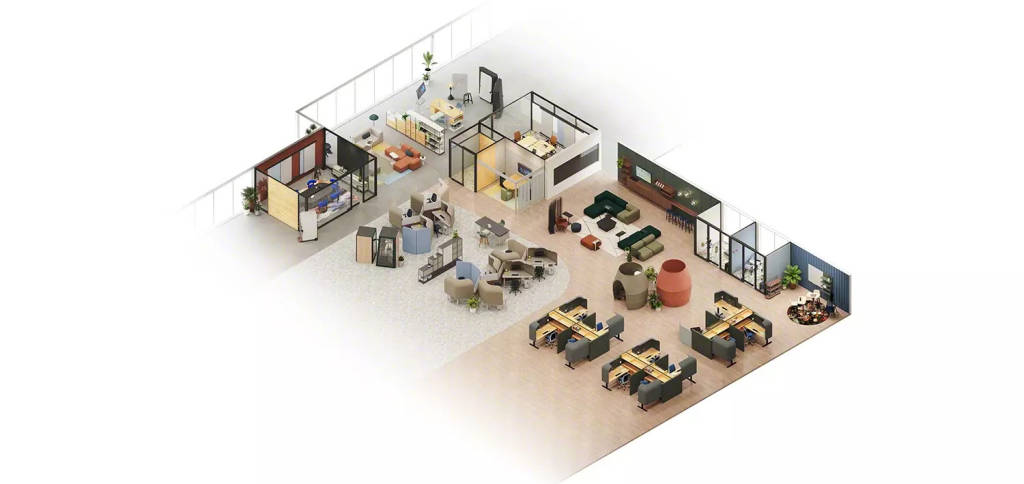
KP: IBM recently brought several facilities together in a project in downtown Toronto. You worked closely with POI, a Steelcase dealer. Can you share what your goals were and how it came together?
KT: This project showcased what IBM was able to do when we put our collective needs together and worked towards a common goal. We had over four sites downtown and we decided we needed to bring everyone together. This was prior to the pandemic. We also started to really understand that we needed spaces to be flexible. We listened to our stakeholders who said we didn’t have enough meeting rooms, they wanted high tops, wanted to be forward thinking, we wanted great furniture and great design. We want everyone to have an area they can feel comfortable in and can do their best work in. We also knew there was a need for us to create a space that was going to help us win the talent war that we could see coming.
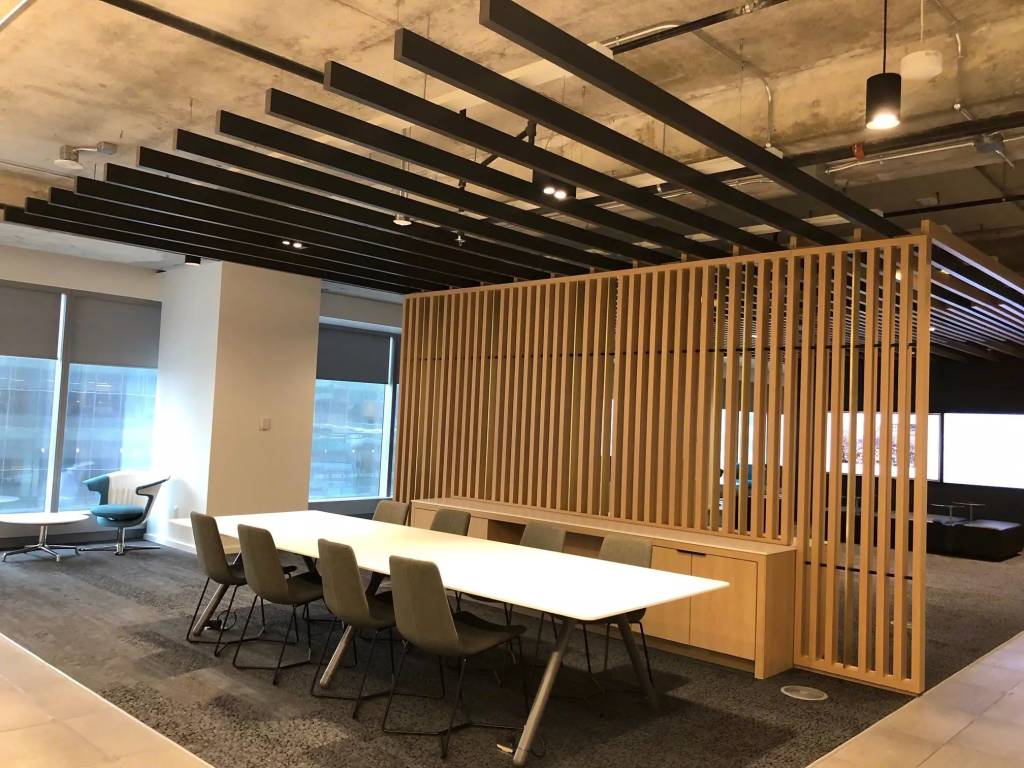
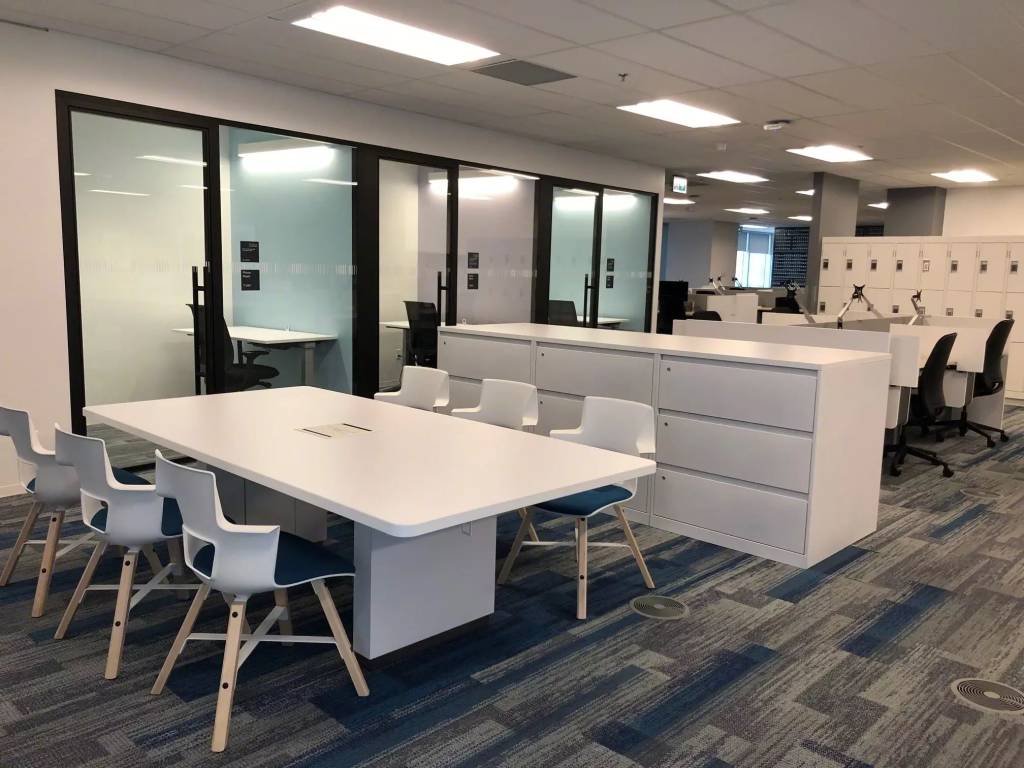
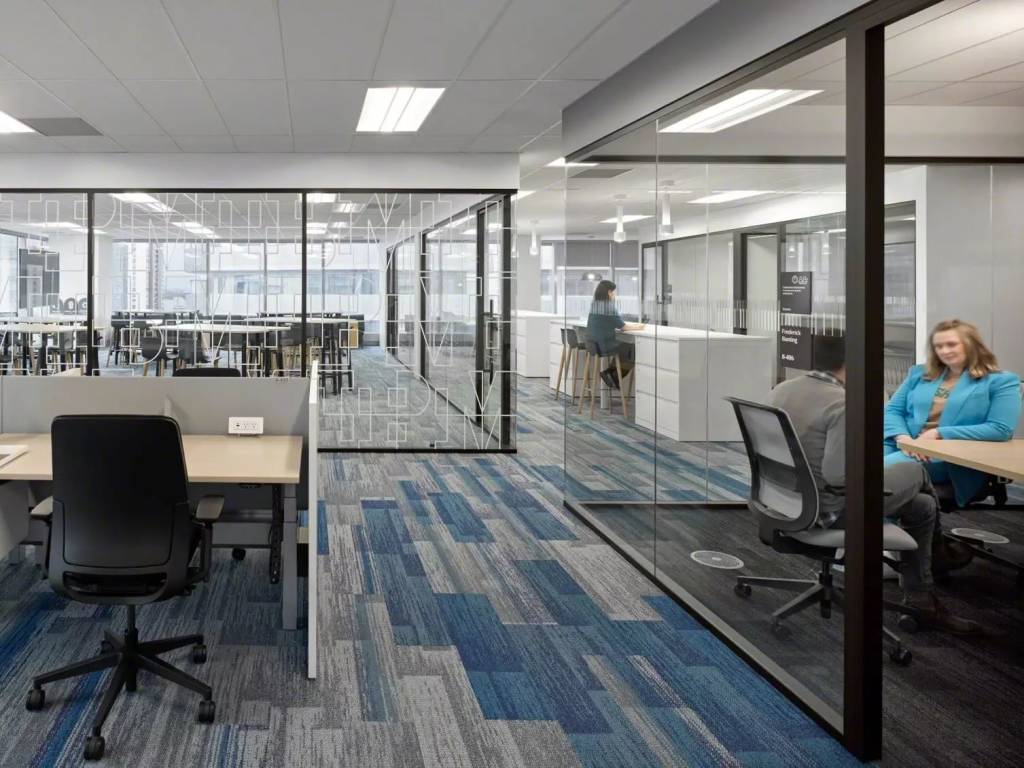
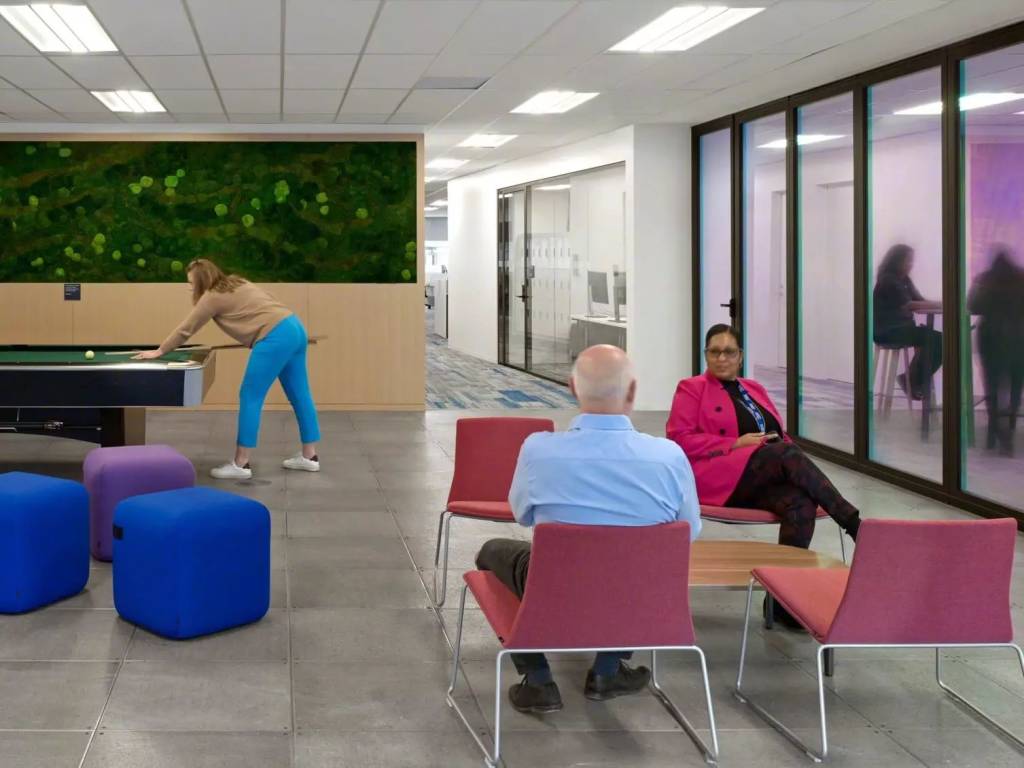
KP: As you mentioned, you started this project before the pandemic. How have you been able to adapt your space to the new needs of your employees?
KT: What we were designing really fit into where society was going. We talked to the different business units prior to even putting a design scheme together and asked them about their needs. We went from over 100,000 square feet to 63,000 square feet. So we knew we had a limited amount of space and we had to make it flexible to fit all the different roles that we have at IBM.
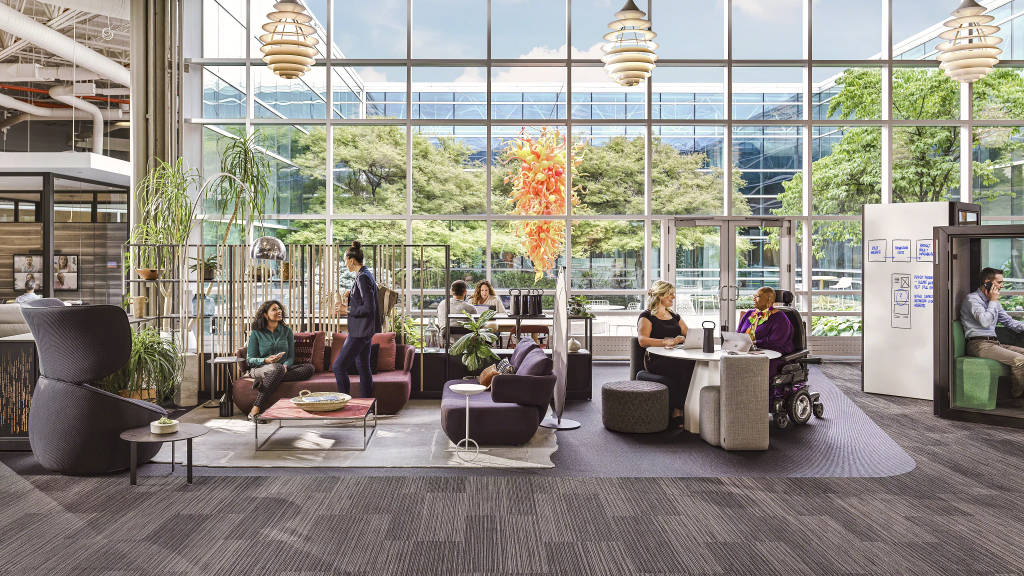
KP: How is Steelcase designing the workplace to create more of these hybrid neighborhoods? And what might inspire other organizations?
CC: This need for flexibility that Kent talks about is something we’ve been working on since before the pandemic, and like many things, the need has really accelerated. If you think about the great neighborhoods where you live, they have a very welcoming, lively energy. Yet they’re not static and evolve over time. They’ve got a range of public spaces, spaces where we gather within our communities and private spaces like our own homes where we have more privacy – yet we can choose to be on front porches or sidewalks if we want to engage with our neighbors. That range of spaces not only suits the needs of employees and all the diverse things they need to do, but it’s also, frankly, a very flexible real estate strategy.
MB: By having more shared spaces and places that are connected, these neighborhoods become as much about getting work done as they are about curating those great social connections and building those trust bonds. And we’re able to still maintain that energy, vibe and flow that we come into the workplace for. You also see integrated technology throughout with thoughtfully-curated adjacencies. When you’re working with a group in a physical space and you have a couple remote participants, those transitions from one space to another should be as seamless as possible.
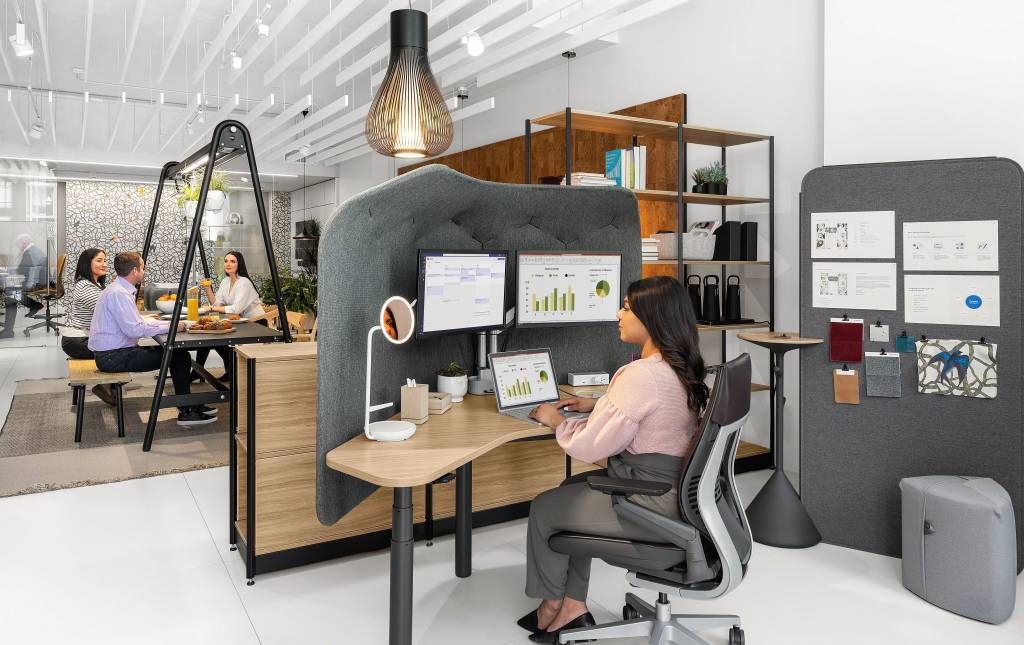
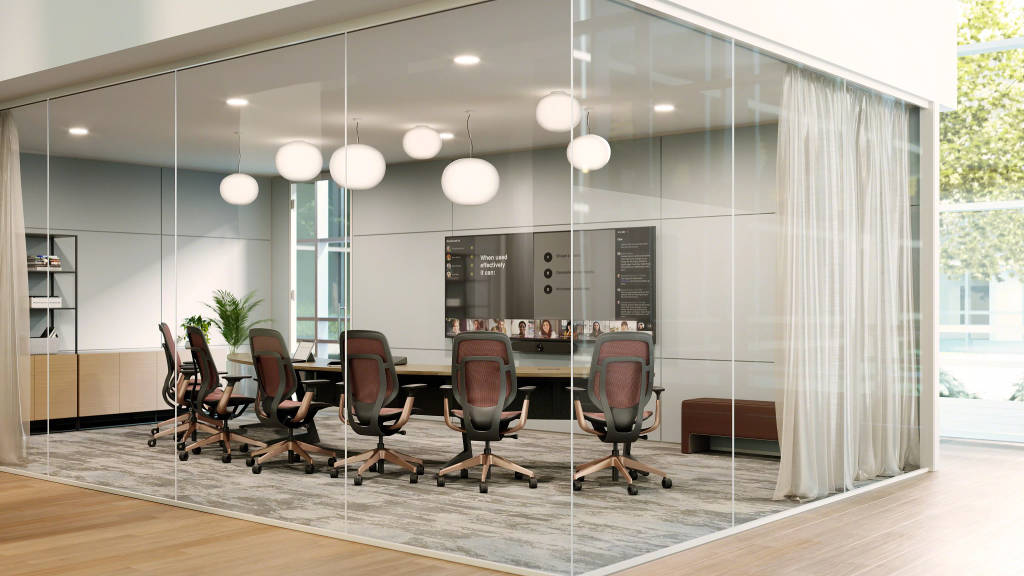
KP: Sustainability is something that’s important to IBM and to many organizations. How did you consider the environmental impact as you work on a project like this?
KT: I’m really proud of IBM because we’ve got our stated 21 environmental and sustainability goals that we’re working towards. 16 York is located in a Lead and WELL Platinum-certified building. Over and above that, in partnership with Steelcase and Green Standards, we were able to exceed 90% of landfill diversion. We sold or donated to 18 local Toronto communities and turned 113 tons of corporate waste into charitable donations which reduced 345 tons of CO2 emissions. We pay attention to all aspects of sustainability. There are bike lockers to encourage cycling to work, energy-efficient lighting, and energy-efficient cooling. Thinking about sustainability is just so key to everything we do today.
KP: If there’s one key takeaway you’d like our audience to remember about today’s hybrid workplace, what would it be?
KT: The one thing that really drove our success at 16 York was involving all stakeholders early and really understanding their needs. Where IBM did a really good job is we were able to look at this holistically. We were able to have workshops, talk about needs, talk about tendencies of our business units, talk about what they value as important and integrate all of that in one holistic plan. It’s something I would encourage anyone to get out in front of because as we all know retrofitting can sometimes be far more painful than when you start a new project. You don’t want to build a beautiful space that is missing elements integral to a business unit or to a team completing their work.
MB: One of the main things to remember as you’re thinking about planning for the future of your workplace is that the opportunity in neighborhoods is highly impactful and enduring for organizations. It gives you that ability to create home bases for teams. That intimate, comfortable environment that also has authorship by those that reside within it. And as you’re doing that, don’t stop, piloting, measuring and pivoting to figure out what is the right combination. Don’t stop designing when people move in.
CC: Hybrid is not the future of work. Hybrid is the present reality. And you have to do something because your workplace is fundamentally going to have to be different to support the way people are working in a hybrid world. We know a lot of organizations are cautious about changing their workplaces now, but businesses are re-focused on profitability and results, so they need to help their people be as productive as possible. IBM did a great job of forward thinking and getting ahead of it. Not everybody has done that and that’s okay. But, it’s time to try something. Even if you’re not going to do a larger facility like IBM did, there are still things that you can do within your existing space to begin to experiment and explore new ways that people are working.
Audience Poll Questions
Nearly 1,000 members of our live webinar audience weighed in on the following poll questions.
Tell us what best identifies your role.
45% Architect & designer
22% Real estate and facilities management
20% Other
10% Corporate strategy & leadership
2% Human resources
2% Information technology
If your organization is using a hybrid approach to work, how is in-office attendance determined?
37% Individual employees decide daily
33% Team or department determines in-office days
13% Organization determines standard in-office days based on role
10% Organization determines standard in-office days for everyone
5% My organization is not using a hybrid approach
2% Undecided
What is most important to you when you go into the office?
58% Collaboration
26% Socialization
11% Focus work
3% Learning
2% Other
When you think about your typical work day, what do you spend most of your time doing?
57% Working alone
43% Working with others
What changes has your workplace made as a result of hybrid work? (multiple answers allowed)
48% Improved or added technology
42% Improved or more collaboration spaces
29% Improved or more shared spaces
23% No changes
20% Improved or more private spaces
What flexible elements does your workplace include? (multiple answers allowed)
82% The ability to work remotely
14% A variety of spaces that anyone can work in
2% Furniture and technology that can be moved by individual employees
1% Furniture and technology that can be moved by facilities team
1% No flexibility


